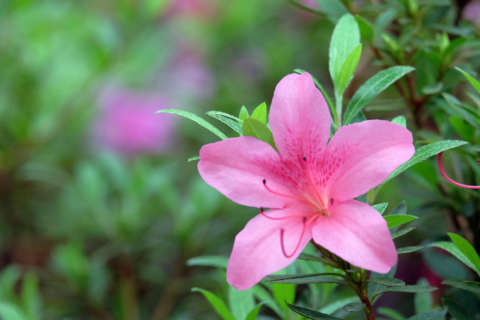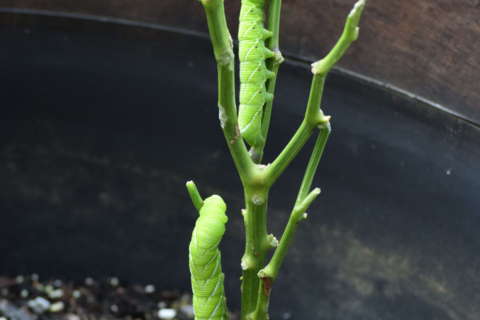Cheri in Annandale writes: “Do moles and voles go together in lawns? I believe we had them about 12 years ago but had big dogs and they seemed to go away. Now we have a small, older dog and tunnels again. Help!”
Yes, Cheri, you can have both moles and voles but they act very differently.
Moles don’t eat plants — only earthworms and grubs. However, they create raised tunnels that are unsightly and can damage lawns.
Voles eat lots of plant material — generally underground parts, like roots and bulbs; they don’t tunnel, but they follow the same above ground path so often that they make distinctive runway-like trails in lawns.
The right kind of dog can keep them away from your landscape, as can outdoor cats (but that’s more controversy than I’d like this summer). “Big dogs” in general can be very effective. So can “ratting” dogs like Jack Russell terriers. But — and this is a big but — all dogs need a lot of attention, care and company; and terriers need a home where their boundless energy won’t become a problem.
‘Treating’ a Lawn for Moles
Cheri in Annandale has moles in her lawn. She continues: “So does my neighbor. His lawn service has started to treat his lawn. If the treatments work, will his moles just move to my lawn? And if I then do the same, will we just send them on down the street?”
The basic answer is: yes.
The only lawn-care “treatment” for moles is to apply grub killer, either a nasty toxic chemical or milky spore, a naturally occurring and nontoxic soil organism that’s deadly to the beetle grubs that moles feast upon.
But neither type of treatment harms the actual moles; they just remove one food source (beetle grubs) in the hope that the moles will, as you say, then move on. But the moles will stay if your lawn has lots of alternative food, like abundance of earthworms or “sleeping” cicadas.
Chase Them with Castor (Oil, That Is)
One deterrent common to both moles and voles is castor oil. But it has to be “old school” castor oil, like your grandmother made you take a spoon of when you were sick — or maybe to make you sick because you broke that nice lamp.
Castor oil sold for “medicinal” use today is deodorized, which is the opposite of what you want to repel moles and voles. For that task, you want super-stinky castor oil, which is the active ingredient in most commercial mole and vole repellents, available at virtually every garden supply store.
Look for products with the highest levels of castor oil as the active ingredient and apply them at the maximum rate. If they’re in granular form, water them well. If they’re liquid, don’t dilute them more than the label says and don’t apply right before a heavy rain.
A Lot of Things Don’t Work on Moles
It’s tough to get rid of moles.
I can tell you right off that gimmicks like vibrating stakes, poison gummy worms (children might well consume a “gummy worm” they find in the yard, so there’s another reason not to buy that worthless product) and Juicy Fruit gum in the hole do not work. Moles only eat live, warm, wriggling food — like earthworms and beetle grubs. They won’t eat a gummy worm, they don’t chew gum and some studies suggest that vibrations might actually attract them.
You can try castor oil repellents and treating the lawn with milky spore, a natural, nontoxic organism that will eliminate beetle grubs (one of their biggest food sources), but rescuing another big dog has a higher chance of success.
After that, it’s down to traps — and not Hav-a-Hart “live traps.”
We’re talking deadly and dangerous spring-loaded plunger mechanisms, which always seemed to me to be an excessive response to a creature that doesn’t eat your plants — and talk about dangerous for children.
Get Off the Beach and Fix Your Lawn (Really!)
Do you have more weeds than grass in your lawn? That’s the actual recommended way to gauge whether or not to tear it all up and start over. More than 50 percent grass? Care for it better. More than 50 percent weeds? Teardown!
If you prefer a cool-season grass that stays green over winter like bluegrass and fescue, the time to start that teardown is right now — not in the spring. Spring soils are too cold for good germination; soil temps in August and September are ideal for rapid and near-total germination.
Cool season lawns despise the hot weather that follows spring seeding, but the same fragile young grass loves growing a deep, strong root system in the cool air and lower temps of fall and winter.
Till up what you have, rake away the worst of the green, have a big load of compost delivered, level it all out, sow a high-quality name brand seed into that lush soil and you’ll have a bulletproof lawn by Halloween.







